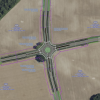The real target should be polluters
Sussex County Superior Court Judge Henley Graves recently overturned regulations established by Delaware’s Department of Natural Resources and Environmental Control in its pollution control strategy for protection of the Inland Bays.
Graves ruled the agency overstepped its legislatively granted authority when it called for 100-foot buffers instead of the county’s designated 50-foot buffers for new developments around Inland Bays waters. Essentially, Graves ruled that the environmental agency, by establishing the contested regulations, went beyond powers granted to it by Delaware’s General Assembly and in so doing stepped on the zoning authority given to Sussex County by the General Assembly.
In his opinion, Graves wrote: “If it desires, the General Assembly can give DNREC the power to regulate the use and utilization of land in the Inland Bays watersheds. It has not done so.”
Sussex County, in taking the issue to court, sought to protect the zoning authority given it by the General Assembly. Landowners who joined the county in the contest sought to protect what they saw as a further taking of their property rights. They estimated that increasing the buffer zone from 50 feet to 100 feet would remove from them an estimated 10,000 acres of developable land.
That sounds like a lot, but it really amounts to only about 3 percent of the estimated 300,000 acres of developable land remaining in Sussex.
Scientists, with few exceptions, say wider buffers would reduce pollution in the Inland Bays, and compared to other pollution-reduction strategies, are highly reliable and relatively inexpensive.
If Sussex County neglects the responsibility that comes with its state-granted authority to protect our natural resources, then the people should lean on council members and their General Assembly representatives to give DNREC the power to regulate land use in the sensitive Inland Bays area.
In the meantime, DNREC should continue to refine its ability to identify sources of pollution and use the enforcement power it does have to hold accountable those responsible for the pollution.













































